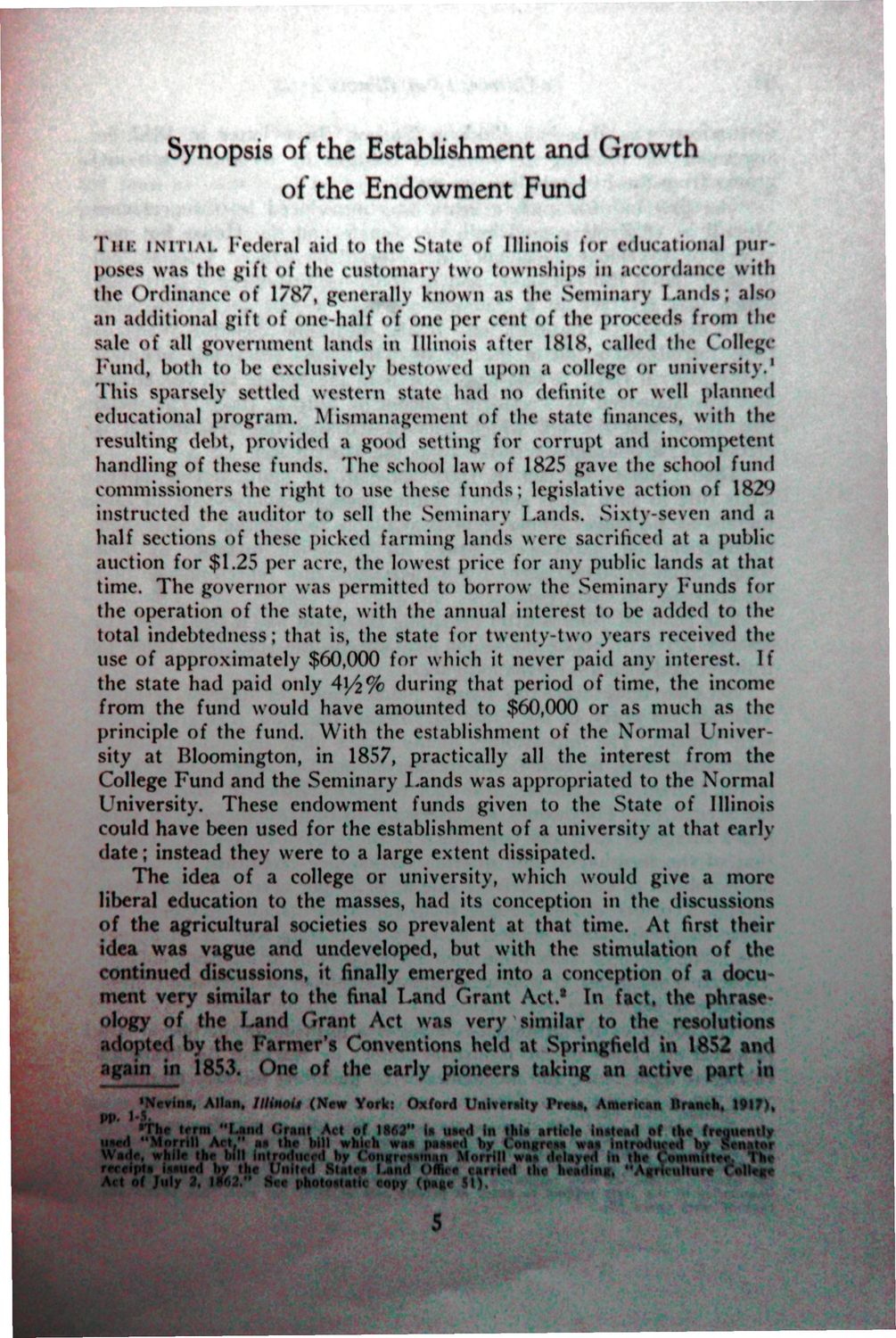| |
| |
Caption: Book - History of Illinois Land Grant Endowment
This is a reduced-resolution page image for fast online browsing.

EXTRACTED TEXT FROM PAGE:
Synopsis of the Establishment and Growth of the Endowment Fund Till-: INITIAL Federal aid to the State of Illinois for educational purposes was the gift of the customary two townships in accordance with the Ordinance of 1787, generally known as the Seminary Lands; also an additional gift of one-half of one per cent of the proceeds from the sale of all government lands in Illinois after 1818, called the College 1 Fund, both to he exclusively bestowed upon a college or university. This sparsely settled western state had no definite or well planned educational program. Mismanagement of the state finances, with the resulting debt, provided a good setting for corrupt and incompetent handling of these funds. The school law of 1825 gave the school fund commissioners the right to use these funds; legislative action of 1829 instructed the auditor to sell the Seminary Lands. Sixty-seven and a half sections of these picked farming lands were sacrificed at a public auction for $1.25 per acre, the lowest price for any public lands at that time. The governor was permitted to borrow the Seminary Funds for the operation of the state, with the annual interest to be added to the total indebtedness; that is, the state for twenty-two years received the use of approximately $60,000 for which it never paid any interest. If the state had paid only 4i/£% during that period of time, the income from the fund would have amounted to $60,000 or as much as the principle of the fund. With the establishment of the Normal University at Bloomington, in 1857, practically all the interest from the College Fund and the Seminary Lands was appropriated to the Normal University. These endowment funds given to the State of Illinois could have been used for the establishment of a university at that early date; instead they were to a large extent dissipated. The idea of a college or university, which would give a more liberal education to the masses, had its conception in the discussions of the agricultural societies so prevalent at that time. At first their idea was vague and undeveloped, but with the stimulation of the continued discussions, it finally emerged into a conception of a docu1 ment very similar to the final Land Grant Act. In fact, the phraseology of the Land Grant Act was very similar to the resolutions adopted by the Farmer's Conventions held at Springfield in 18S2 and •gain in 1853. One of the early pioneers taking an active part in »Nevins, Allan, Illinois (New York: Oxford University Pr^ti, American llranch, 1917), UV 1*5. *Thr irrm "Land Crant Ac! of IS6J" Is uae«l in this article instead of the frit* truly used "Merrill Art,'* a* the lull whi< h wan i»aaae«l by OtnicrtM Wit Introduce* hy Sci Wade, while the hill introduced hy < ••ugrefsMtan Morrill waa delayed in the < ountttef. Thf receipts iiaued bv th« I'nitcd .States Land < 'nVS tarried the heading, "AfHrulttit. * •liege Act of July 2, I$62.** S photostat" *>!>/ (page 51V 5
| |